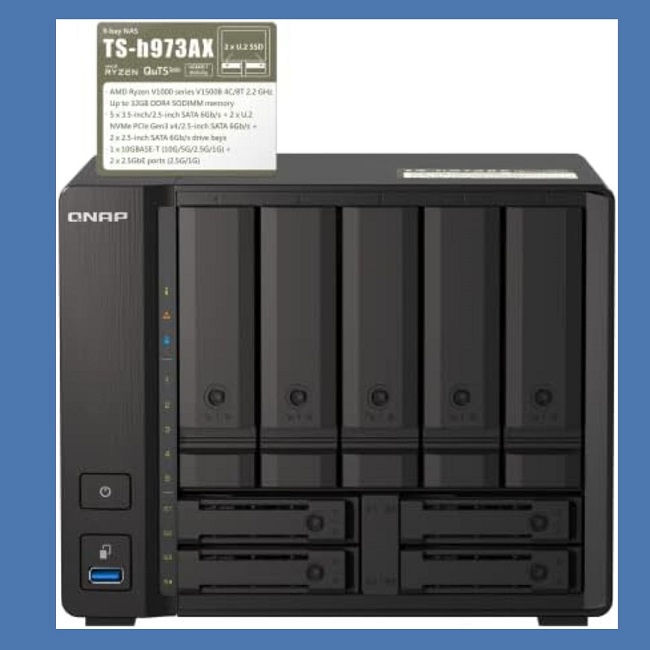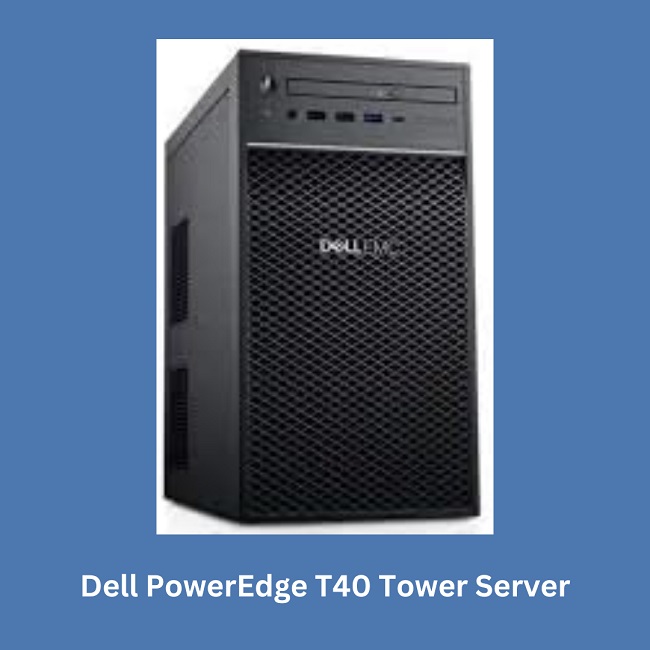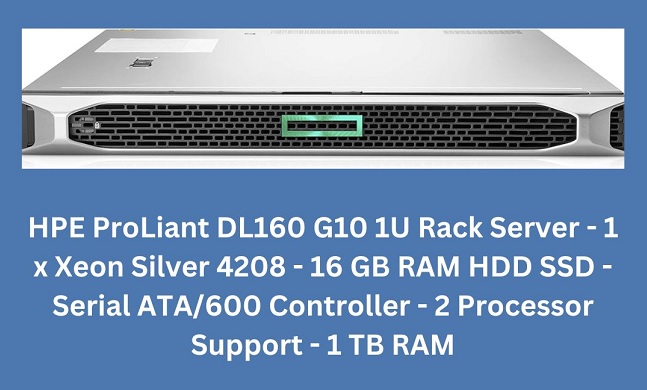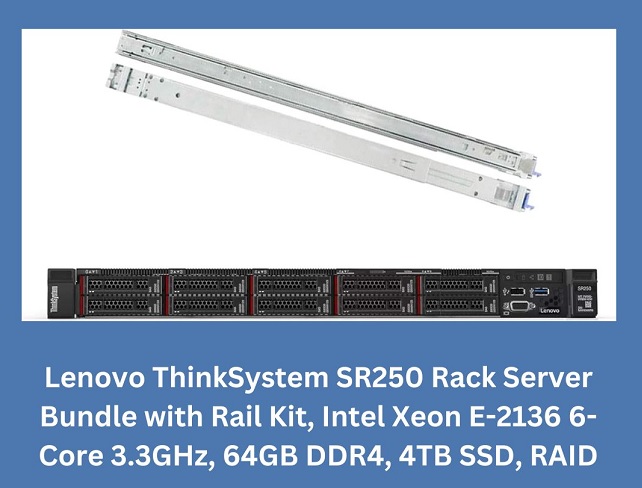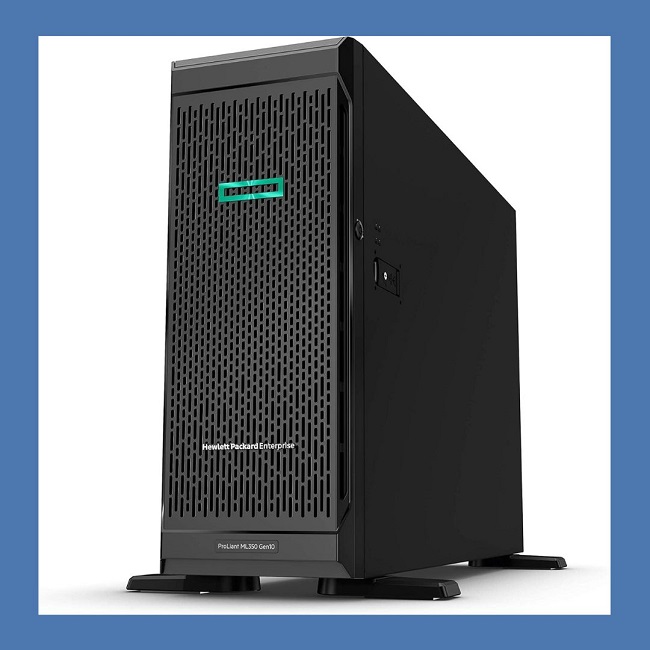7 Best Server For Home Lab: Buying Tips
Last Updated on 4 months by Touhid
The best server for home lab can be a great way to experiment with different tools, applications, and networking devices in your home. However, this process requires the usage of good-quality servers.
A home lab server is a desktop computer system that is utilized for educational purposes, experimentation, testing, and operation of services that are comparable to those in commercial data centers.
It is a lovely alternative if you want to work in the IT industry professionally without paying thousands of dollars. So, keep reading to learn about the best home lab servers.
Table of Contents
How Do Home Lab Servers Work?
A home lab is a private, off-the-shelf space where you can test new technology. Home lab servers are personal computers modified for usage in a home setting. They are like tiny versions of professional-grade servers.
This lab can be used for various tasks, such as media file storage and providing a stable testing environment for DevOps processes. You can use any OS, program, and collection of tools to configure your home lab as you see fit.
Central processing units (CPUs), random-access memory (RAM), storage drives (HDDs or SSDs), and network interfaces are common parts of these servers. You are free to choose or alter these hardware requirements in accordance with your unique requirements and financial limitations.
The home server lab is seamlessly incorporated into the home network, allowing it to communicate with other gadgets such as laptops, cellphones, and Internet of Things devices. Home lab servers are excellent resources for practical learning.
They provide customers with the flexibility to test different operating systems, connectivity settings, security setups, and software installs without worrying about negatively impacting production environments.
Networking settings enable customized connection and resource usage by giving users control over how the server communicates with other servers on the local network and the wider internet.
Top 7 Best Server For Home Lab
After our deep research to find the best servers for the home lab, we picked out 7 servers that we believe are the best in the market. So, keep on reading to know more about these servers.
1. Dell EMC PowerEdge R640 Server
The Dell EMC PowerEdge R640 Server Bundle provides individuals of home labs looking for significant processing power and storage capacity with a reliable and affordable option.
This is the only refurbished product on our list, but as this is a certified refurbished, it’s a good deal. Otherwise, it would be impossible to find this at such a price.
In a home lab setting, two Intel Xeon Gold 6130 2.1GHz 16-core processors of the Dell EMC PowerEdge R640 offer substantial processing power for multitasking, virtualization, and heavy tasks.
The 1U server has a stylish bezel and an incredibly customizable mechanism behind that bezel. So, it gives you the freedom to customize in your way.
This server package also has amazing storage and processing capability, but prospective customers should ensure it will work for their planned use cases and consider their demands.
Key Features
- Includes dual Intel Xeon Gold 6130 16-core processor.
- Comes with 64GB DDR4 RAM.
- Dell PERC H740P NV Cache 8GB RAID Controller.
- Dell Broadcom 5720 Quad-Port 1Gb 1000BASE-T PCI-e R Series Daughtercard.
Pros
- Comes at a reasonable price.
- Robust processing capabilities suitable for multitasking.
- Options for scalability.
- Has a compact design.
Cons
- The design may not be compatible for everyone.
Final Verdict
With its two Intel Xeon Gold processors, the Dell EMC PowerEdge R640 Server Bundle is an attractive option for anybody looking for a strong and scalable home lab server. It provides significant processing power and storage capacity appropriate for virtualization, multitasking, and a range of tasks in the home.
2. Hewlett HPE ProLiant DL380 G10 2U Server
This is another best server for home lab. The Hewlett Packard HPE ProLiant DL380 is not the newest technology in the market; it came out in 2017 but offers heavy-duty features that are still suitable for 2024.
The HPE ProLiant DL380 G10 is a strong and adaptable server made to satisfy the needs of contemporary enterprises. Because of its 2U size factor, which makes it an excellent option for a variety of IT infrastructures, rack space in data centers and server rooms can be used efficiently.
With its enhanced Smart Array RAID controllers, the HPE ProLiant DL380 G10 server provides more connectivity and storage choices. Equipped with the Intel Xeon Silver 4208 CPU, it achieves a remarkable equilibrium between power efficiency and performance. This server can handle up to 192GB of HPE’s Persistent Memory NVDIMMs and up to 3TB of DDR4 Smart Memory.
According to our testing, this CPU’s eight cores and base clock speed of 2.10 GHz make it incredibly suitable for a wide range of applications, such as virtualization, multitasking, and easily handling heavy workloads.
Key Features
- Maximum processor speed of 2.10 GHz.
- Comes with 32GB of RAM.
- Has an 8-core ultra-fast processor.
- No HDD capacity.
Pros
- Offers iLO 5 quality management.
- Plenty of configurable options.
- With support for both a 12Gb/s SAS controller and Serial ATA/600, the server enables flexible storage configurations.
- For integration into server racks, the 2U rack form size is perfect.
Cons
- The processor may seem weak for extensive load.
Final Verdict
The secure 2U HPE ProLiant DL380 Gen10 server offers world-class performance with the ideal ratio of flexibility and scaling, making it adaptable for various workloads and settings.
3. QNAP TS-h973AX-8G 9-Bay Home Lab Server
Excellent hardware is included with the QNAP TS-h973AX-8G server. The specifications are excellent, and the device control and caching options are a great deal. This is a best server for home lab who are looking for a compact device for their complete setup.
A high-capacity NAS (Network Attached Storage) device built for demanding storage requirements is the QNAP TS-h973AX-8G. It is appropriate for both personal and corporate usage because of its 9-bay layout, which provides enough room for storing enormous quantities of data.
Its connection choices are among its most notable qualities. Fast connections are essential for high-performance data access and transfer, and this NAS has both 10GbE and 2.5GbE ports.
Because of this feature, it’s perfect for settings like creative studios, small-to-medium-sized enterprises, or even homes with high data consumption, where quick and dependable access to stored data is critical.
Furthermore, data integrity is given top priority by the ZFS-based QuTS Hero OS, which powers the QNAP TS-h973AX-8G. It provides real-time SnapSync, broad snapshot features, and block-level integrated data reduction and compressing.
These features support essential operations such as virtualization, which is file servers, group video editing, and effective backup and recovery of data. With its business-grade performance, dependability, and affordability, it’s the perfect option for a variety of applications that demand the best possible data protection and management.
Key Features
- Enough storage space is provided by the 9-Bay configuration for a range of data demands.
- Comes with AMD Ryzen Embedded V1500B quad-core eight threads 2.2 GHz processor.
- Has 8 GB DDR4 RAM.
- Type-A and Type-C USB 3.2 Gen2.
Pros
- It offers versatile connectivity thanks to 10GbE/2.5GbE ports.
- Makes sure your data stay protected.
- The RAM can be extended up to 64 GB.
- The transfer speed is very high.
Cons
- The setup and configuration are complex.
Final Verdict
Powerful NAS that meets the demanding requirements of home lab setups is the QNAP TS-h973AX-8G. Because of its many connectivity choices, sophisticated QuTS Hero OS, and expandability, it’s a great solution if you need a lot of storage, fast networking, and strong data management.
4. Dell PowerEdge T40 Home Lab Server
The Dell PowerEdge T40 is a reliable entry-level server suitable for small businesses and home offices seeking a dependable computing solution. It’s powered by the Intel Xeon 3.5 GHz E2224G processor.
Although it lacks a few premium capabilities and has trade-offs that allow Dell to compete fiercely on price, it is intended to be an entry-level server for SMB, SOHO, and edge computing markets.
This is the best server for home lab, which offers a good foundation for small-scale operations, with 8GB of RAM and a 1TB hard disc. In the event of a drive failure, a certain amount of fault tolerance is ensured by adding flexibility and data redundancy provided by DVD RW and assistance for RAID 5.
Furthermore, as this is a server built on a workstation architecture, the front of the machine has four USB ports, including a USB 3.0 and Type-C connector. So, you can stay assured you will never run out of connectivity options.
One of the best features of this server is its expansion capabilities. In addition to a conventional PCI slot, there are two x4 slots and a PCIe Gen3 x16 slot. Therefore, this covers whether you desire PCIe or PCI. This is essentially a slot that is twenty years old.
Key Features
- It comes with an Intel Xeon 3.5 GHz E2224G processor.
- Offers RAID 5 support.
- Comes with an included DVD RW drive.
- Has 8 GB storage and 1 TB storage.
Pros
- Offers both PCIe and PCI expansion slots.
- The tower design is quite compact.
- Includes a 3-year warranty.
- Comes at a reasonable price.
Cons
- Not suitable for high-level professional work.
Final Verdict
If you are in search of an entry-level server under budget, then the Dell PowerEdge T40 is the best choice for you. It is a suitable choice if you are just getting started with the home lab system and looking at basic work.
5. HPE ProLiant DL160 G10 Server
We have already listed the G10 2U rack server, but this one from HPE comes with a 1U Rack instead of a 2U and comes at a lesser price. This home server lab is powered by the Xeon 4208 processor.
This little 1U server has the same build quality and aesthetic that HPE is known for. Every drive is loaded starting at the front. The ID card is located in the center of the front panel, whereas the power button, USB 3.0 port, ILO port, and LED indicators are located on the right side.
This home server, which has an Intel Xeon Silver 4208 CPU, offers a strong platform for even more demanding applications. Moreover, integrated Lights-Out (iLO) 5 is used by the HPE ProLiant DL160 Gen10 for management.
Furthermore, it offers flexibility in balancing speed and storage capacity depending on particular demands, thanks to its 16GB of RAM and support for HDD and SSD storage options.
Storage device communication is made possible via the Serial ATA/600 Controller, which guarantees effective data transfer speeds.
The board also offers access to a secondary slot for additional Smart Array choices and a bay for BBU in addition to the conventional version’s Smart Array S100i SR software controller.
Key Features
- Includes Gigabit Ethernet & 8 x SFF.
- Powered by the Xeon Silver 4208 Processor.
- Integrated with 16 MB graphics card.
- Has 16GB RAM & HDD SSD.
Pros
- Offers support for 2 processors with one installed processor.
- Has a compact design
- Eight Small Form-factor drive bays offer a range of storage options.
- It’s impressive that the DPC latency varied between 1000 microseconds and less.
Cons
- The 16 MB graphics card can be too low for graphics-intensive work.
Final Verdict
For those who want a powerful, small server that can scale, the HPE ProLiant DL160 G10 is a best server for home lab enthusiasts. Its capability for two processors, large RAM capacity, and several storage bays provide flexibility and expandability, meeting a range of workloads and rising needs.
6. Lenovo ThinkSystem SR250 Server
Within its compact shell, the Lenovo Think System SR250 V2 has an unexpectedly robust hardware configuration. This small 1U single-socket server is intended for expanding SMBs looking for a versatile on-premises solution.
Lenovo offers three different chassis variations for setup. There are two types of chassis available: an entry-level model with four LFF hot-swap drive bays and a flagship model with ten SSF bays. Virtual and hardware controllers fully support RAID, just like they do for the majority of storage devices.
It has a 6-core, 3.3GHz Intel Xeon E-2136 CPU, which provides solid performance for a range of workloads, including resource-intensive jobs and basic business applications. Additionally, this server has 64GB of DDR4 RAM, which is more than enough memory to tackle several jobs at once.
The server has two inbuilt Gigabit network ports by default, but it can accommodate more ones as Lenovo’s twin-port 10/25GbE SFP28 adapters and dual and quad-port Gigabit and 10GbE cards may be installed in the two PCIe Gen4 slots that are available.
Furthermore, a processor with up to eight physical cores and a 95W power consumption can be installed.
Key Features
- Powered by Intel Xeon E-2136 6-Core 3.3GHz processor.
- Offers 4TB (4 x 1TB) 6Gb/s SATA III Solid State Drives for lots of storage.
- Has 64 GB of RAM.
- Comes with two inbuilt Gigabit network ports.
Pros
- Comes with Rail kit which makes mounting it easier.
- The build quality feels solid.
- Has high memory load.
- The configurations can be expanded.
Cons
- The storage can be complicated to expand.
Final Verdict
The Lenovo ThinkSystem SR250 Rack Server Bundle is a well-rounded package. If you need a compact device then this can be a great choice. The 1U form factor makes the rail even more accommodating for placing more systems.
7. Hewlett Packard TowerLenovo SR250 Server
This is another best server for a home lab. With support for two CPUs, a large memory capacity, and remarkable storage, the HPE ProLiant ML350 Gen 10 provides exceptional scalability. This server is known as a dual-socket server tower because they frequently operate storage and services in distant branch offices without access to racks.
The HPE ProLiant ML 350 Gen 10 comes with a 2.3 GHz Intel Xeon Gold 5218 CPU; this server has remarkable processing capability that can easily handle a wide range of activities. This Intel CPU is expandable, allowing for additional NVMe solid state drives and 24x DIMM slots at up to 2666MHz.
Moreover, the expandable option is also a great feature. By using HPE’s standard 8+8+8 drive bay arrangement, the ML350 Gen10 can update its single SFF hot-swap cage to hold up to 24 drives in three blocks.
Its dependability and sturdy construction are two of its most notable qualities. The Gen10 High Performance model lives up to the status of being one of the most durable models in the HPE ProLiant line.
Additionally, it has cutting-edge management capabilities, such as HPE’s iLO (Integrated Lights Out) technology, which allows for remote oversight and administration, resulting in less downtime and effective troubleshooting.
Key Features
- Powered by Xeon Gold 5218 Processor.
- includes management tools from HPE for effective tracking of servers and management.
- Has 32 GB of installed RAM.
- Dual socket tower server.
Pros
- The processor is very powerful, providing very high speed.
- Has a simple and sophisticated design.
- Many different storages options.
- Has huge expandability options.
Cons
- You may need a cooler for upgrades.
Final Verdict
The HPE ProLiant ML350 Gen10 High Performance Tower Server is a heavy duty server that comes with a powerful processor and huge expandability options. Its dual-socket server tower offers great ease of access for your home lab and offices.
Buying Guide For The Best Server For Home Lab
Designing your first home lab can always be confusing as it involves a lot of different factors and choosing the right server can be the most daunting task. So, we have designed the buying guide below in such a way that it will help you make the best server for home lab without much hassle.
Form Factor
The first aspect to consider is the form factor; Rack or Tower. Tower servers are practical and simple to operate, making them perfect for configurations in which rack installation is not an option.
Because they are often quieter and blend in well with a variety of situations, they are appropriate for use in offices or homes. Moreover, these servers make maintenance and upgrading easier since they are accessible and easy to use.
Rack servers, on the other hand, are made to be both scalable and space-efficient. They are ideal for configurations where future growth is expected.
In a dedicated server room or data center, rack-mounted servers are better organized and conserve floor space. For bigger systems, they provide improved cable management and ventilation.
Workloads
Another thing to consider is the workload, the type of server you need highly depends on the workload. The resources required for various lab activities vary, and knowing these requirements makes setup optimization easier.
A mid-range CPU is frequently sufficient for activities like creation, evaluation, virtual machine running, and software experimentation. Cost and performance must be balanced in these situations.
Choosing a mid-range CPU allows you to save money while yet having enough power to do these typical home lab tasks.
Processor
This is another important consideration when buying the best server for home lab. Modern CPUs with many cores should be given priority when choosing a processor for your home lab server. For most home labs, a dual- or quad-core CPU is more than enough. For activities that don’t require a lot of multithreading, take into consideration CPUs with higher clock rates.
Performance is improved by systems that enable cores to manage numerous threads, such as SMT and Hyper-Threading. For quicker data access, use CPUs with bigger cache capacities. Strong choices appropriate for server tasks are provided by AMD EPYC, high-end AMD Ryzen/Threadripper CPUs, and Intel Xeon (E-2100, Silver, Gold series).
Budget
Budget is another consideration you must think of when looking for best servers for home lab. Investing in a faster processor and more RAM can be expensive, but this will ensure higher work efficiency and faster processing speeds.
On the other hand, mid-range CPUs and lower RAM can result in lower price tags, but the work processing speed will be less. So, before setting up a budget, make sure to understand how much work you need to get done and set the budget based on that.
Options for expansion
Selecting servers that support upgrades in CPU, RAM, and storage capacity is essential for meeting future requirements in a home lab configuration. Many server motherboards enable simple upgrades in the event that you discover you’ll eventually require extra CPU power.
You can also add a second CPU later on, thanks to the capability for multi-CPU setups on some server motherboards. Scalability is, therefore, essential since your requirements could change over time.
FAQs
Choosing best servers for home labs can always be a confusing decision, so if you are still confused, keep reading our FAQs below.
Is it important for home lab servers to have coolers?
Like any other server or computer system, cooling is essential for home lab servers because they generate heat as they process data continually. The heat produced by server components like the CPU, RAM, and storage devices is dispersed with the aid of coolers, which take the shape of fans or other cooling systems.
What is the suitable RAM and storage for a home lab server?
Depending on your particular use cases, workload demands, and lab size, a home lab server’s RAM and storage needs can differ. We advise you to get at least 500GB to 1TB of SSD storage in addition to a minimum of 16–32GB of RAM.
What is the recommended power and cooling for home lab servers?
The exact power consumption for servers can vary heavily depending on the server model. Therefore, to determine the power consumption of your home lab server, make sure it matches the power sources you have available by looking up the server’s power consumption parameters, usually written in the case or the instruction manual.
Conclusion
A perfect home lab can never be efficient without a good server, and you must be careful enough to select a server that’s suitable for your workload. Servers offer many different configurations, but it is always advisable to choose a server that’s expandable in the future.
You can choose a server from our list, as we tried including some of the best servers on the market. We hope it will be the best server for home lab and the perfect choice depending on your work type.
Affiliate Disclosure : Cyberthreatportal is a participant in the Amazon Services LLC Associates Program, an affiliate advertising program designed to provide a means for website owners to earn advertising fees by advertising and linking to amazon.com.


